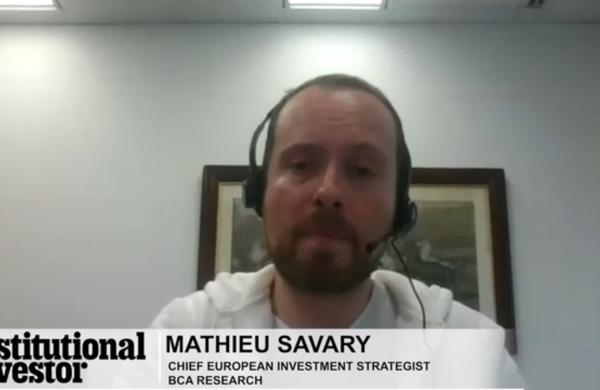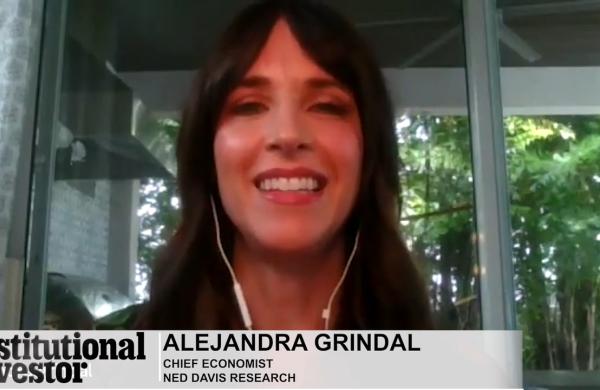Click here to see the ranking.
The term "analysis" is doubly apt in finance these days. Institutional investors, regulators and brokerage firm executives have all been putting in time on the couch trying to rethink their sometimes troubled relationship with equity research.
Major institutional investors are scrutinizing their dealings with sell-side research departments to pinpoint which analysts provide them with in-depth information and moneymaking stock picks for their commission pounds and euros -- and which don't. Regulators are reexamining research recommendations to make sure that they foremost serve investors' -- not bankers' -- interests, and they're checking that clients don't have to pay for a lot of unnecessary add-ons with their research. Brokerages, stung by the postbubble bear market and revelations about tainted research, are searching for ways to ensure that their analysts create value while earning their own appropriately reduced keep.
"Everyone in the industry is working on clearer negotiations with clients on how they assess research, what they are looking for in research, what type of research they are willing to pay for," says David Mathers, co-director of European equity research at Credit Suisse First Boston. "The old model is gone."
That model wasn't very precise or reliable when it came to valuing research. Sure, research was allocated a proportion of the commissions that investors paid their brokerage firms to trade stocks. Yet investors didn't pay commissions for specific stock recommendations; instead, they spread the wealth among a number of brokers to maintain solid working relationships and ensure that they received other brokerage services, from investment software, financial publications and data to deal flow -- especially hot initial public offerings. And, of course, investment banking departments subsidized research to ensure coverage of existing and potential banking clients -- a practice that regulators have now banned because of its inherent conflict of interest.
Having lost their subsidies and facing the possibility that regulators will tighten the definition of "securities analysis" to protect investors from paying for services they may not need, research departments are scrambling to remake themselves. A common organizing principle: Investors prize outstanding performance above all else. That can mean picking the best-performing stocks or providing the kind of information that allows money managers to make their own stellar selections.
Institutional investors believe that UBS, of all brokerage firms covering European equities, comes closest to delivering on this ideal. For a fourth consecutive year, the Swiss banking giant is rated the best research firm on Institutional Investor's All-Europe Research Team. This year investors award the bank 36 team positions -- up sharply from 30 a year ago. Deutsche Bank climbs to second place from fifth in 2004, and Merrill Lynch repeats in third. Smith Barney Citigroup falls from second to fourth; Morgan Stanley rises one place to No. 5; and CSFB drops back from a tie for third place in 2004 to sixth.
II has again divided its All-Europe Research Team in two. This month we present the overall European research team winners for pan-European industry sectors, developed-market macro disciplines and Western European countries. Next month we will publish the industry, macro and country rankings for the emerging markets of Europe, the Middle East and Africa.
Our leaders are sprinting to keep pace with clients whose research needs go far beyond buy and sell recommendations or bland updates. Most investment firms want fewer, more meaningful relationships with the best sell-side research departments.
"We're looking to focus more on a few teams and individuals that are really effective, where we can take the relationship deeper and further," says John Hatherly, head of research at M&G Investments in London, which oversees £117 billion ($211 billion) and employs nine researchers. His analysts cover as many as 70 companies each, so he wants help from sell-siders in drilling deeper into these stocks. Among his research requirements: management meetings with continental companies, industry knowledge and well-reasoned economic judgment (not computer modeling).
Now more than ever, says Michael Oertli, head of UBS's European research, analysts have to be willing to stand behind their work. "Our job is to provide the buy side with our independent research," he says. "And apart from providing them with analysis and services, we are paid to provide idea-driven contraconsensus research where we have high conviction." Translation: Analysts must make more big calls, so their clients can earn better returns.
To put their researchers in a position to deliver on these promises, European brokerage firms are trying to free them as much as possible from maintenance tasks like providing earnings updates or tracking companies with at best mediocre prospects and instead allow them to focus on searching more broadly for winning bets. They also are encouraging analysts to work more closely with clients to generate bespoke research projects that will complement the customers' own work and help them get the most out of their own in-house research.
One institution, pan-Scandinavian Nordea Bank, has gone so far as to direct a small group of its own analysts to find investments with a chance to outperform, while outsourcing much of its regular company research by hiring the U.S.'s Standard & Poor's to track Nordic firms.
Others have come up with less extreme -- but no less provocative -- ideas. Frankfurt's HVB Group last March combined its equity and fixed-income research departments so that analysts will be more inclined to look across asset-class dividers to find the most promising securities and to offer better coverage of popular hybrids, like convertible bonds and credit derivatives. Deutsche Bank followed suit in December.
Research directors are talking about working more closely with clients to address their particular needs. At CSFB, says Mathers, the emphasis is on getting paid for developing customized products. Similarly, "offering research in partnership" is a guiding principle at UBS, says Paul Rix, who heads the firm's research product management in Europe. That can be as straightforward as installing a new information technology system that delivers research at 4:00 a.m. to clients' PDAs so that they can keep abreast of UBS's views during their daily commutes. But it can also can mean sending out a team of quantitative analysts to pore over a portfolio manager's valuation methods, back-testing stock-selection criteria or using UBS's proprietary risk and style models to analyze a portfolio.
London hedge fund Marshall Wace's trade-optimized portfolio system, or TOPS, is another example of the buy side's desire to focus on only the best investment ideas. The firm, which runs more than $4.3 billion in a variety of funds, including two long-short offerings and a statistical-arbitrage vehicle, won't speak about the system, but knowledgeable sources say it encourages analysts or salespeople from brokerages, among others, to submit trading ideas or stock recommendations; TOPS then electronically logs them and screens them to see if they meet sundry performance benchmarks. If a suggestion passes muster, it is subjected to another battery of statistical exams to ascertain the optimal number of shares to buy or sell. Marshall Wace portfolio managers then review trading proposals, and the ideas are put through a compliance screening before any action is taken. Contributors are kept apprised of how their suggestions are faring, and Marshall Wace rewards them with commissions if their ideas are used.
TOPS underscores the changing nature of researchers' relationships with clients, particularly with hedge funds. "It's the logical conclusion of a form of interaction that has been going on for some time," says Simon Ruddick, managing director of Albourne Partners, an independent consulting firm on alternative investments. "No one has done it quite so mechanically as they have." Ruddick believes TOPS is a good model for several hedge funds' working relationships with City firms. These clients will pay well -- but only for ideas that they judge to have merit.
Are research firms meeting those demands?
They are making progress. Buy-side voters in our All-European rankings this year registered a small overall increase in satisfaction with brokerage firm research. On a scale of 1 to 10, investors gave sell-side research a 6.34, versus a 6.25 in 2004. That's a big improvement over 2003, when researchers received a 5.93, reflecting fallout from the bear market and reports of conflicts of interest in European and American research departments.
The pressure to measure the value of research as a distinct commodity is coming not only from hedge funds; regulators, too, are embracing the idea. In 2001 former Gartmore Investment Management chief executive officer Paul Myners concluded in a report for the U.K. Treasury that there ought to be more transparency in the trading fees paid by British investment funds. Ever since, some regulators have promoted the unbundling of research and execution costs, separate services that nonetheless have traditionally been paid for together with trading commissions.
In April 2003, Britain's Financial Services Authority issued a consultation paper, CP176, that formally proposed as much. The FSA asked brokerage firms to provide clearer information to fund managers and their clients about each cost and recommended that investors be allowed to pay for services separately wherever feasible. The authority is expected to review the brokerages' and fund managers' progress toward these goals early this year before publishing a draft of rule changes this spring. A final version is due by summer.
This regulatory change will provide even more impetus "toward increasing the clear attribution of value for research by investors," says CSFB's Mathers. Although there is some worry that small money managers with a handful of analysts may get hurt if research-related commissions rise sharply, most buy-side firms welcome the expected changes.
"It will lead to a focus on better research, because it provides transparency," says Nick Anderson, research director at Insight Investment Management, the asset management arm of Halifax and Bank of Scotland Group, which oversees more than £74 billion. "I suspect me-too research will disappear."
Greater transparency may also give a new boost to tiny, tightly focused independent research shops, which have made less headway in Europe than in America. (In the U.S., of course, the major brokerages that signed the Global Research Settlement with New York State Attorney General Eliot Spitzer and other regulators in April 2003 agreed to subsidize some independents.) Initiatives like CP176 will "level the playing field" in the U.K., maintains Mark Glowrey, an analyst at London-based Stockcube, a long-time independent provider of analysis of everything from stocks to mutual funds to commodities. Glowrey expects the ranks of London independents -- he estimates the lot at about 12 significant players and 25 minor ones -- to grow over the next year.
"One of the most compelling reasons for dealing with analysts in bigger houses is that they tend to have better access to companies because traditionally they liaise with companies in their capital market relations," says Mark Bridgeman, director of research at Schroder Investment Management, with E146 billion ($180 billion) in assets under management. "If you are a bulge-bracket firm, you think you've got to cover the waterfront. We only need a handful of good ideas a year."
No firm has gone as far as Nordea in revamping its research to cope with the new realities. In August of last year, the bank said it planned to shut down its 30-person in-house research group and set up a new unit, Alpha Research Team, that consists of a group of sector specialists, quantitative research analysts and strategists. Meanwhile, Nordea has contracted with independent research provider S&P to create a 20-person group (some from Nordea's former operation) in Stockholm that focuses on 200 Nordic companies; investors will also be able to use S&P's global coverage of more than 1,500 European, U.S. and Asian stocks.
"The Nordic market is a microcosm of the dilemma facing the wider equity research industry," says Frans Lindelöw, Nordea's Stockholm-based head of equities. "There are over 650 analysts worldwide following Nordic stocks, all of them essentially producing the same sort of research, and not all of them adding value for clients. Transferring the function to an independent provider improves the credibility of our company research, makes the economics of the research function more transparent and enables us to focus on generating and communicating strong investment ideas for our clients."
Julien Hardwick, who runs European equity operations for S&P, reasons that "many banks are taking a long, hard look at their research function, and we expect others to follow Nordea's path." Among the reasons Hardwick cites: overcapacity, questionable quality, regulatory constraints and declining margins.
Other reorganizations aim to squeeze better performance out of research. Last March, HVB, which had discussed outsourcing some research, put all 70 of its debt and equity analysts in one place and combined their output. Thorsten Weinelt, head of the firm's global research, says the new structure is designed to get analysts thinking across asset lines about high-return prospects.
"You are basically trying to answer the question: Which asset class has the potential to make the most money, compared to the risk in each class?" says Munich-based Weinelt. Too often, he adds, researchers have restricted themselves to a single asset class or sector and overlooked high-return potential elsewhere.
The new setup, he notes, should offer more possibilities to do the kind of bottom-up analysis of companies that would appeal to hedge funds. Combining the skills of equity and credit analysts can in theory provide investors with insights into capital-structure arbitrage opportunities within a single company or help unearth the most attractive asset on its balance sheet.
Deutsche Bank had many of the same goals in mind when it merged its equity research with its high-grade and high-yield credit research in December to form what it calls global company research. Its head is David Folkerts-Landau, who formerly headed fixed-income research. His troops will sit alongside three other research groups: global macro research, global markets strategy and global quantitative strategy.
Folkerts-Landau stresses that the firm's decision was driven by a bankwide reorganization last September that combined equity and fixed-income activities. Major restructurings are never painless: Deutsche Bank, which has improved its position in II's poll from fifth in 2000 (and in 2004) to second this year, eliminated the positions of three of its senior equity research executives -- Russell Duckworth, global head of equity research; Nimrod Schwarzmann, European head of research; and John Willis, head of equity strategy and global sector research.
"Equity products and fixed-income products are coming much closer together because of the growth of credit derivatives and structured products," Folkerts-Landau contends, and the new structure is meant to take advantage of that. Deutsche Bank offered a glimpse of how it will approach these putatively intertwined markets in the most recent edition of its "European Banks Quarterly," which highlights UBS, Royal Bank of Scotland Group and Banco Bilbao Vizcaya Argentaria as its top bank stock picks and RBS and HSBC Holdings as its best bond bets in this sector.
Many research directors and investors, however, see limits to the appeal of combining bond and stock coverage. "There are definitely idea synergies, but our fixed-income business benefits from having a cohesive group of fixed-income analysts looking at credit," says CSFB's Mathers. "It's a very different focus and approach from equity research, and you need to be excellent at both to succeed in each business." Adds Insight Investment's Anderson: "They are going to have to be clever how they structure their recommendation framework. The drivers on debt and equity are very different, and the overlap between debt and equity isn't as large as people perceive it to be."
Even some hedge funds caution that City firms, in their eagerness to court well-heeled alternative-investment clients, may be overestimating those clients' clout and misjudging their needs. "There's a lot of noise in the market with hedge funds being established and many of them having a very much trading mentality," says Giovanni Govi, research director at London hedge fund manager Theorema Asset Management, which oversees about $1 billion. "Research on the sell side is adapting to that, resulting in more and more short-term ideas that have little bearing on fundamentals." But he warns that brokerages should keep fundamental research as their top priority rather than giving too much weight to trading.
No matter how they're arrayed on the research front, the best European stock analysts are capable of delivering moneymaking ideas. For a second straight year, they were aided by improving European markets, which rose 9.4 percent in 2004, following a 16.5 percent rise in 2003. (Through mid-January the markets had gained 0.4 percent for 2005.)
Consider the coups of several members of this year's All-Europe Research Team. Deutsche Bank's 38-year-old tobacco analyst Gerry Gallagher, a three-time member of our first team, braved adverse investor and analyst sentiment in late 2003 to recommend the underperforming shares of Spanish tobacco maker Altadis. As the researcher explains, his Deutsche Bank team "just ran the numbers and stuck to our guns," despite the rise of formidable antismoking campaigns throughout Europe last year and a host of new cigarette taxes that threatened the performance of Altadis and others. By mid-January 2005, Altadis shares had risen by 49 percent, about 26 percentage points more than Spain's IBEX 35 index, 37 percentage points more than the MSCI Europe benchmark and nearly twice as much as European tobacco shares.
Then there's the stellar work of Enskilda Securities research director Björn Jansson, 41, and his 45 analysts on the winning Nordic Countries team. In August 2003 they started pushing the stock of Norwegian tanker operator Frontline, recognizing that the need to ship more and more oil and other goods to China and other fast-growing parts of Asia would boost shipping rates. Through mid-January 2005, Frontline's shares had rocketed 151 percent higher.
Much of the outstanding work done in the past year helped investors sidestep losses. Goldman Sachs International's Keith Hayes, who heads the firm's three-person first-team Autos & Auto Parts group, cautioned clients that storied German sports-car-maker Porsche was reaping substantial earnings from its adroit use of currency hedges as the dollar dropped against the euro. "We argued this would not last," says Hayes, who downgraded the shares last June. Porsche stock has since done a U-turn, losing 11 percent of its value following a 21 percent rise in the first half of 2004. In a similar move, CSFB insurance analyst Robin Mitra, who together with co-leader Maurizio Lualdi oversees the winning four-member team, advised clients to avoid Swiss reinsurer Converium Holding last February and highlighted some balance-sheet problems. Clients who took their advice got out before Converium announced a dilutive $420 million rights issue in early October and avoided an 85 percent drop in its share price. That is a recommendation worth paying for.





